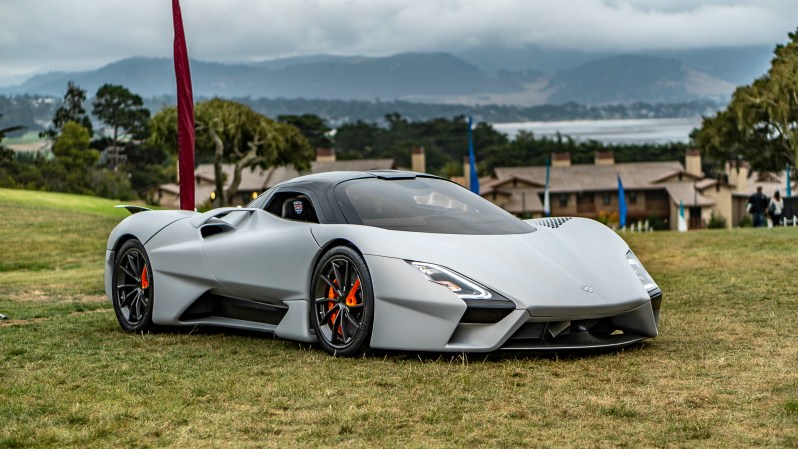
You’ll have to rewind all the way back to 2011 to find the first mention of SSC’s sophomore hypercar, the Tuatara. Back then, the company released a handful of numbers, a host of pictures, and even trucked out a model of what it stated would become the successor to its own SSC Aero, which for a short time held the title of fastest car in the world. Then, nothing. The company went dark. All mention of the Tuatara vanished.
And for seven years, that would remain. That is, until this year’s Concours d’Elegance, where the Tuatara reemerged.
Besides a general outline of the Tuatara and a claimed 265 mph top speed, little details ever came to light. We now have more. First off is the all-carbon body. Sculpted by Jason Castriota — once the designer of Pininfarina, Bertone, Saab, and most recently, Ford — the Tuatara’s angles, vents, and body lines are all there to allow the car to climb into the upper echelons of speed with a 0.279 drag coefficient.
To get there, however, you need more than a slippery body. To chase that of Koenigsegg and Bugatti, you need power. Something the Tuatara has in spades.
Generated from a Nelson Racing Engines’ twin-turbocharged V-8, the 5.9-liter flat-plane crank engine is capable of delivering 1,750 horsepower when it runs E85 fuel. When owners use the more standard premium gasoline, the Tuatara makes use of just 1,350 horsepower. Torque hasn’t been released yet.
Redline, however, is a spine-chilling 8,800 rpm. As for the transmission, SSC says that all the Tuatara’s power is sent through a seven-speed automated manual transmission. As for the rest of the Tuatara’s metrics, we’re still somewhat in the dark. The company did declare that they plan on the hypercar exceeding 300 mph.
When and where, however, is another question that’s yet to be answered.
Lastly, the company has stated that the Tuatara is ready to enter production immediately. Only 100 Tuataras will be made and SSC is ready to accept pre-orders. No price though has been released. We’re hopeful, however, for the company’s second go; though it’s still somewhat difficult to gain traction in the hypercar segment, it’s become much easier to produce a real car. Fingers crossed this insane creation gets off the ground.








